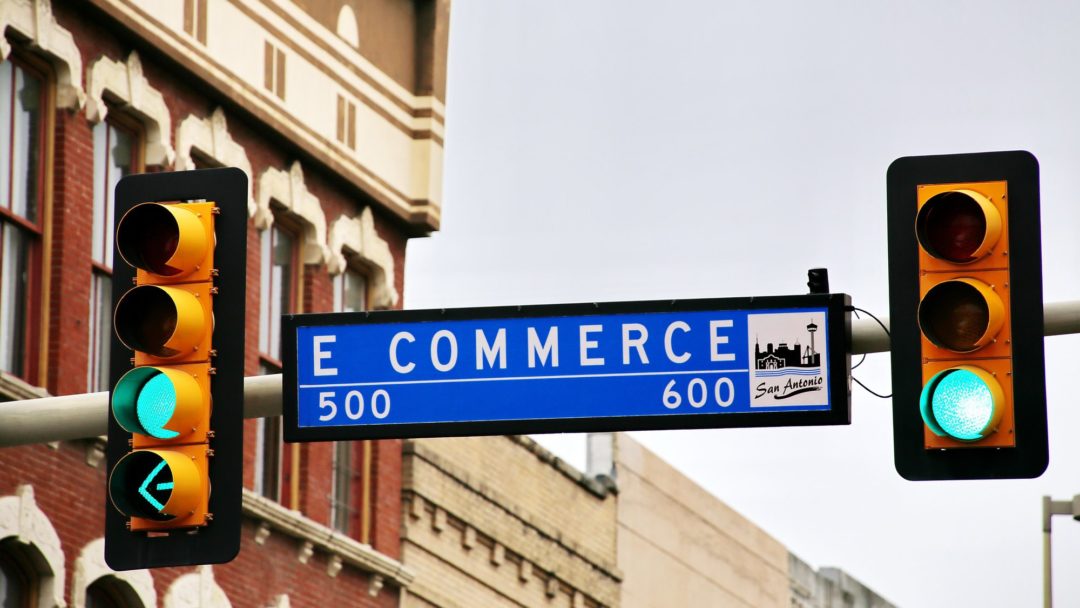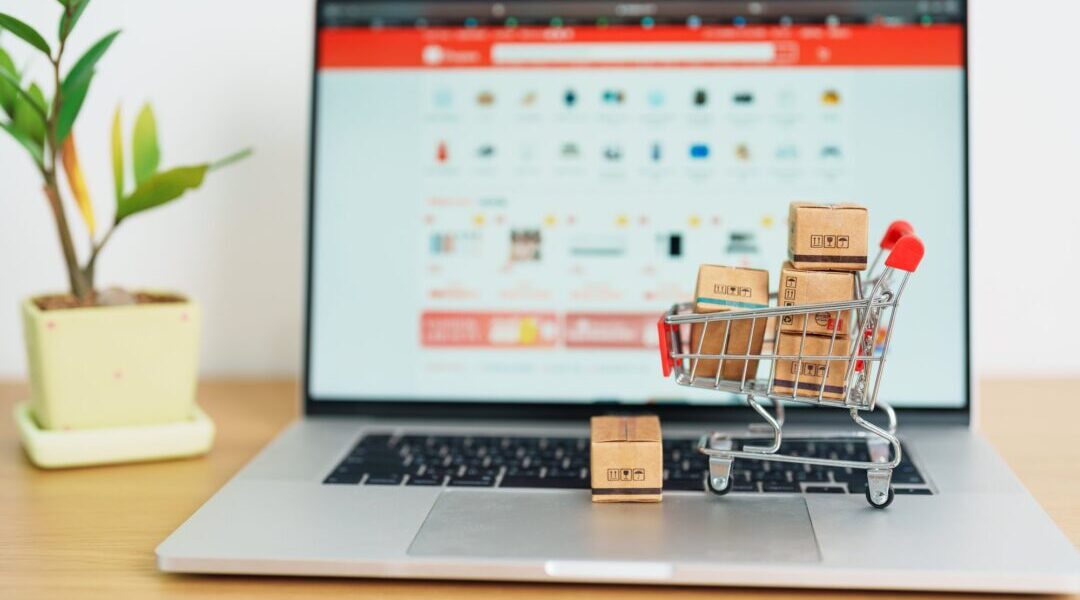More B2B brands are beginning to take digital commerce seriously; a move that is likely spurred by the e-commerce boom over the last few years and quickly accelerated by the latest lock-down of our society. The industry is following the steps of B2C businesses and moving to a B2B e-commerce model, but analysts are predicting that they may do even better.
According to a 2019 report by Forrester, U.S. business-to-business (B2B) e-commerce transactions could hit $1.8 trillion by 2023. That’s huge, and the potential to grab market share is something every B2B brand should be looking at, to figure out ways to optimize their e-commerce and grow their revenues.
To stand a chance at successful digital commerce, B2B businesses have to focus their optimization efforts on improving customer experience (CX). B2B brands specialize in selling to other businesses, but it is important to remember that the decision-makers are people, too.
Here are the top 10 capabilities that B2B e-commerce platform should offer. These capabilities enhance businesses online and can be divided into sections according to every step of the sales funnel.
Top 10 Out-of-the-Box Capabilities that Every B2B E-Commerce Platforms Should Offer
1. Clear Brand Communications
The marketing copy on your landing pages should accurately describe the who, what and why of your organization. Address your target consumers’ pain points succinctly, and be sure to include, in plain terms, how your product or service is the perfect solution for their problems.
The B2B E-commerce platform should offer the ability to easily create, update, and revise the content on an on-going basis. The need to manage content is often overlooked when the marketing team is not represented in the evaluation process of the e-commerce platform.
Great Commerce platforms include an intuitive content management system where users can drag and drop images, develop text and create simple messages or call to actions.

2. Customer-friendly Language
There’s the tendency for B2B brands to focus too much of their copy on their brand story and achievements in a bid to showcase their capability. Bear in mind that the customer is king, and your product is designed to serve them, not you. Great copy treads the fine line between describing your brand’s strengths while aligning those with the needs of the ideal client.
The marketing team needs the ability to write plain English (and not HTML), upload pictures, and videos throughout the creative process. This is a great feature to have from the platform. Having one repository for all content enables you to share content like images and videos across the organization and ensure every team is delivering a consistent story for your brand.
3. Easy-to-Use Self Service Functions
Ensure that your B2B customers have control over their purchasing process. By automating the transaction processes, you create a seamless experience for consumers regardless of time zones or location. This is also a convenient addition for your business, as you don’t have to worry about the cost of hiring human sales reps that are available 24/7.
Be careful to not end up automating ALL the processes involved, as AI and computer programs cannot replace the human touch needed to form a connection with a customer. Automate repetitive procedures like product research, quote requests, order placements, order tracking, and reordering. These capabilities are much appreciated by the sellers who are now freed up from their order-taking tasks to become active advisors to their customers.
4. Product or Service Education
B2B customers are more intentional than B2C customers, who tend to make more impulse purchases. About two-thirds of B2B customers agreed that educational content was a criterion that they looked out for when choosing B2B e-commerce vendors to patronize. The ability to present structured content from a product catalog as well as unstructured content such as blogs and articles is a fundamental feature of a B2B e-commerce platform.
Investing in e-books, blog posts, and/or newsletters centered on content helps to build an authoritative reputation for your brand. Not only do you stand out as a thought leader, but these content channels can serve as more avenues for client sourcing and conversion, especially if you optimize them using Search Engine Optimization (SEO) best practices.
According to Demand Metric, companies with blogs produce about 67% more leads monthly than companies that don’t blog.
5. Straightforward Access to Sales or Customer Service

This feature can be a dicey one to get right. Many businesses interpret ‘straightforward access’ to mean pop-up chatbots, which are rarely a good idea. Bots are intrusive and could distract users from following through with making a purchase.
Instead of pop-ups that appear soon after the start of a web session, asking visitors who might not even be viable leads to speak with a sales representative, you may want to consider a separate page for Chat/Contact. You could retain visibility by placing it at a strategic part of the platform where it would be hard to miss.
Or, you could have a pop-up that only comes up after a user has perused the platform to a certain extent.
6. Mobile-Responsive
Amazon reported that 68 percent of online B2B customers are millennials who would rather research products online than speak with a salesperson. 61 percent of those would do said research on a mobile phone.
A responsive B2B e-commerce platform guarantees that all features are accessible on small mobile screens enabling a buyer to engage anywhere and at any time.
7. Effective Product Filters
Product filters allow merchants to display more information about the attributes of a product and allow customers to refine product searches more easily.
This feature saves users time that they would otherwise spend scrolling through many product listings. Instead, they can cut to the chase by filtering results by specific criteria.
8. Advanced Site Search
Usually, B2B products or services have a lot of specific variables, as merchants serve businesses of different scales. An advanced on-site search feature is essential to ensure that your customers can find the products they need quickly and easily. An advanced platform allows customers to use plain English to search; behind the scene, merchandisers can prepare a whole dictionary with product names, synonyms, aliases and even ingredient names so the search engine can respond to any inquiry from the customers. Even when an exact match is not found, related topics can create a deeper engagement with the customers.
Powerful commerce platforms provide the capabilities to deliver highly relevant search results and even anticipates what a buyer wants through machine learning.
9. Flexible Ordering or Quoting Process
We have established that the needs of B2B buyers vary, and your automated ordering process has to be equipped to cater to the many possible needs. Now, how do you go about this?
You must ensure that your B2B e-Commerce platform includes these must-have features:
- Bulk ordering and discounts – B2B buyers usually order in large quantities, so it is crucial to optimize checkout procedures to simplify this step. You could create bulk order categories, and then incorporate automatic discounts for each category.
- One-click reordering – Reordering is quite a repetitive and routine task. By enabling the one-click reordering feature, your customers’ previous order information will be saved so their next purchase can be completed in one click.
10. Automated Recurring Orders
Take one-click reordering a step further by including a feature that automates repetitive orders. It’s a great way to show that your business is dedicated to making transactions easy for returning customers also, and that could be an incentive for customer loyalty.
This could be something as simple as a “Reorder” button on order fulfillment pages, that automatically adds the items to the cart. This saves users the time and effort they would have spent selecting the item and its specifications all over again.
“Recurring order” can be placed at the interval requested by the customer, and even cancelled or edited before the next fulfillment period.
Final Thoughts
If you are looking to develop and optimize your B2B brand’s digital commerce presence, compete for market share at a global level and increase revenue, these ten features are must-haves. Your human resources can dedicate full-time effort towards making and maintaining solid customer relationships. You can trust that all of these features are available on HCL Commerce platform.
Please contact us at contactus@zobristinc.com to request a demo.





